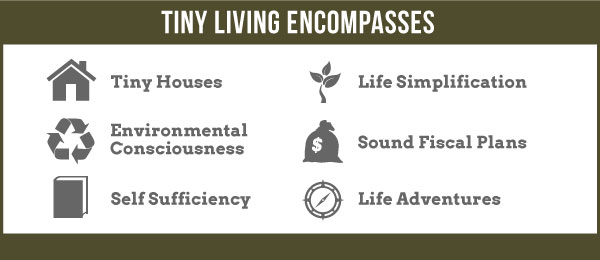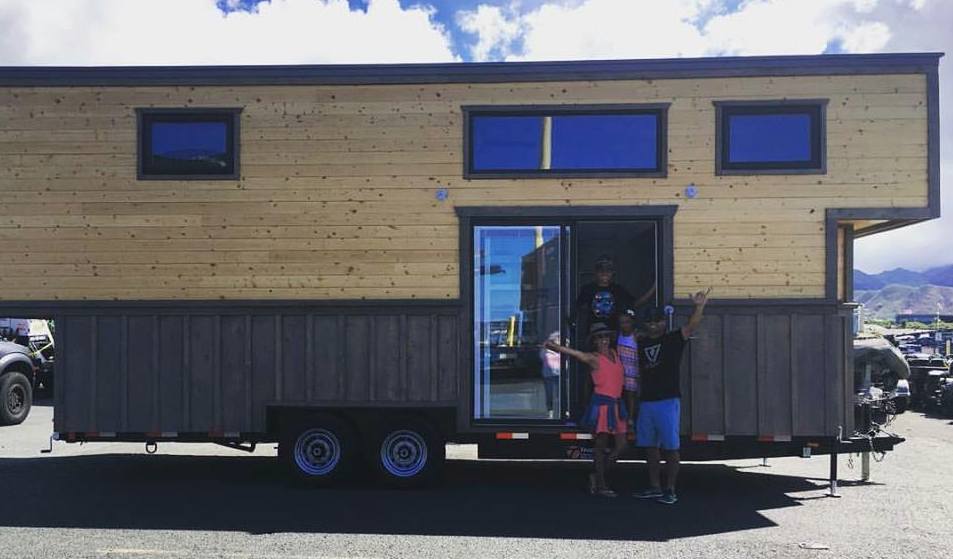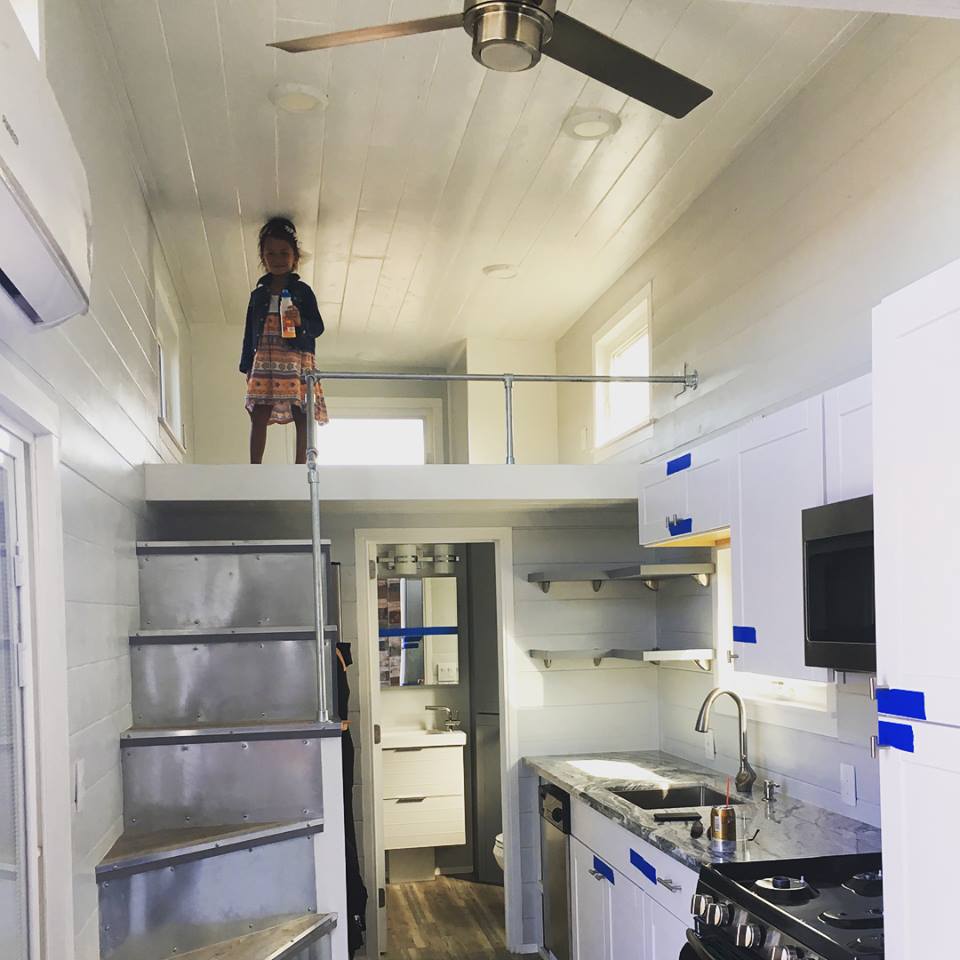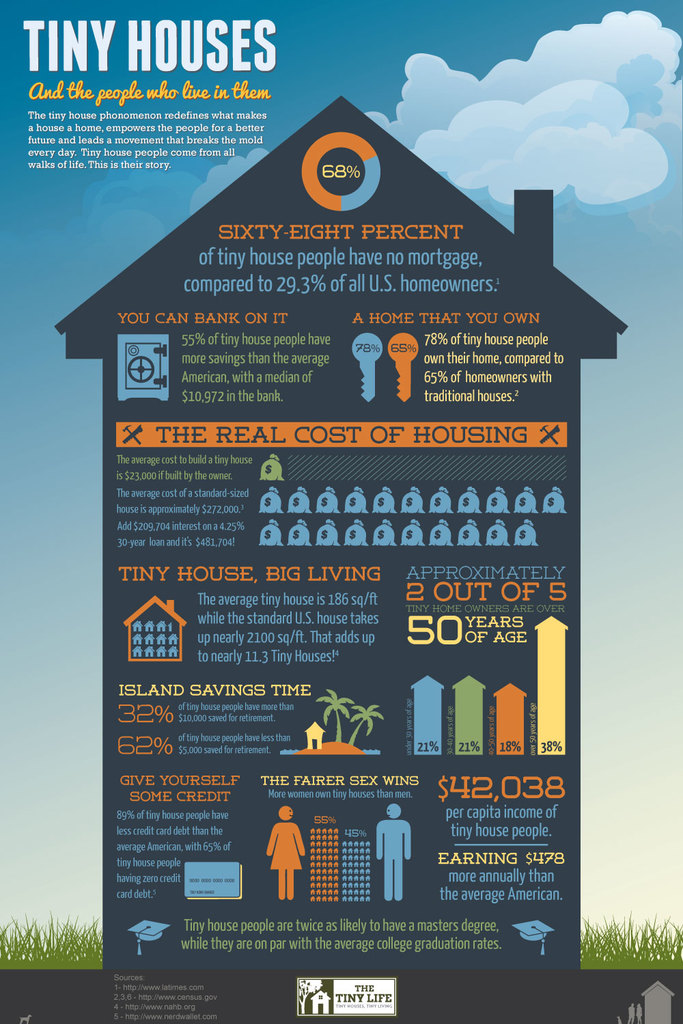There’s a tiny movement that’s sweeping the nation, The Tiny House Movement that is. More and more Americans are opting out of living in traditional size home, about 2,600 sq. ft., and instead, choosing to live in a residential structure less than 400 sq. ft. Now that just for one person right? Wrong, these tiny homes are built to fit to the size of your family, whether you are single, a couple or even a family of four!
So why would anyone make such a drastic lifestyle change? Although there are many reasons why Americans are making the switch, many have made the change due to environmental concerns, lifestyle flexibility and the most common, financial concerns.
Research shows that in 2014, 76% of working Americans were living paycheck-to-paycheck at that 26% of those Americans spend 50% or more of that paycheck on rent or housing. And after groceries and other monthly expenses, there really isn’t enough to add to your save pile. So at first, the thought of living in 400 square foot home seemed a bit cramp, however when you factor in that Hawaii’s is the most expensive state to live in, living a tiny home doesn’t seem so bad; especially if it allows more opportunity to save.
Although the tiny home movement is new, the trend of downsizing in Hawaii has actually become the norm. It isn’t uncommon to find a family of 5 squeezing into a 2 bedroom townhome in Ewa or couples living in a Honolulu studio; all with the goal of having a roof over their heads and being able to save.
Meet the Kitashima Ohana:
The Kitashima Ohana, a family of four, was one of the first families on Oahu to buy a tiny home. They had a dream of building their home on some vacant land their family owned in Ewa Beach. As the family started their plans, they soon learned about the amount of money it would cost them in permits alone, a whopping $30,000!!! And after going back and forward with the the Department of Planning and Permitting, the Kitashima’s realized that they needed to think of a Plan B. Over dinner, they jokingly played around with the idea of being tiny home owners and a few months later their tiny hale was here!
The home consists of a bathroom, kitchen, and even space for two queens size beds.
So how has life been for the Kitashima’s since the move? Mrs. Kitashima says there are a lot more steps before they can fully use the house. They are still figuring out the best ways to access water, electricity and other utilities, so for now, they are using the unit as their weekend get away. Mrs. Kistimasha shared that she believes their tiny home has brought their family closer together, and not just literally. She says that living in their tiny home really teaches her kids how to simplify their lives and how to still have fun as a family with the bare minimum!
So what does a tiny home cost? And will we see more of these in Hawaii? The average price of a new RV is $122,715, Mobile homes: Basic single section models sell for $30,000-$70,000; customized models sell for up to $100k, and Tiny Homes: New tiny homes sell for anywhere in from $35,000 and $80,000. Almost all are customized.
Currently, we see a few farmers buying tiny homes to house workers and to create working spaces, however as cost of living and real estate continues to rise in Hawaii, it wouldn’t be surprising to see more and more families opting to switch to the tiny house movement.







